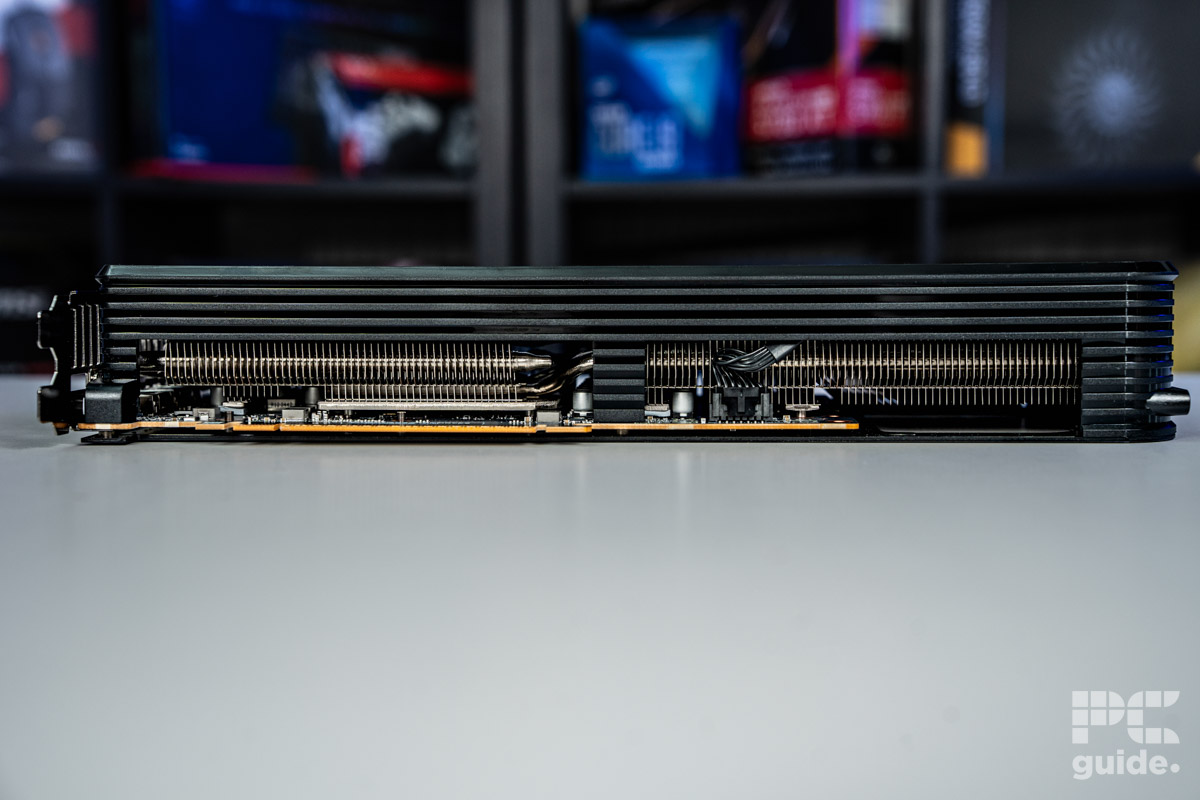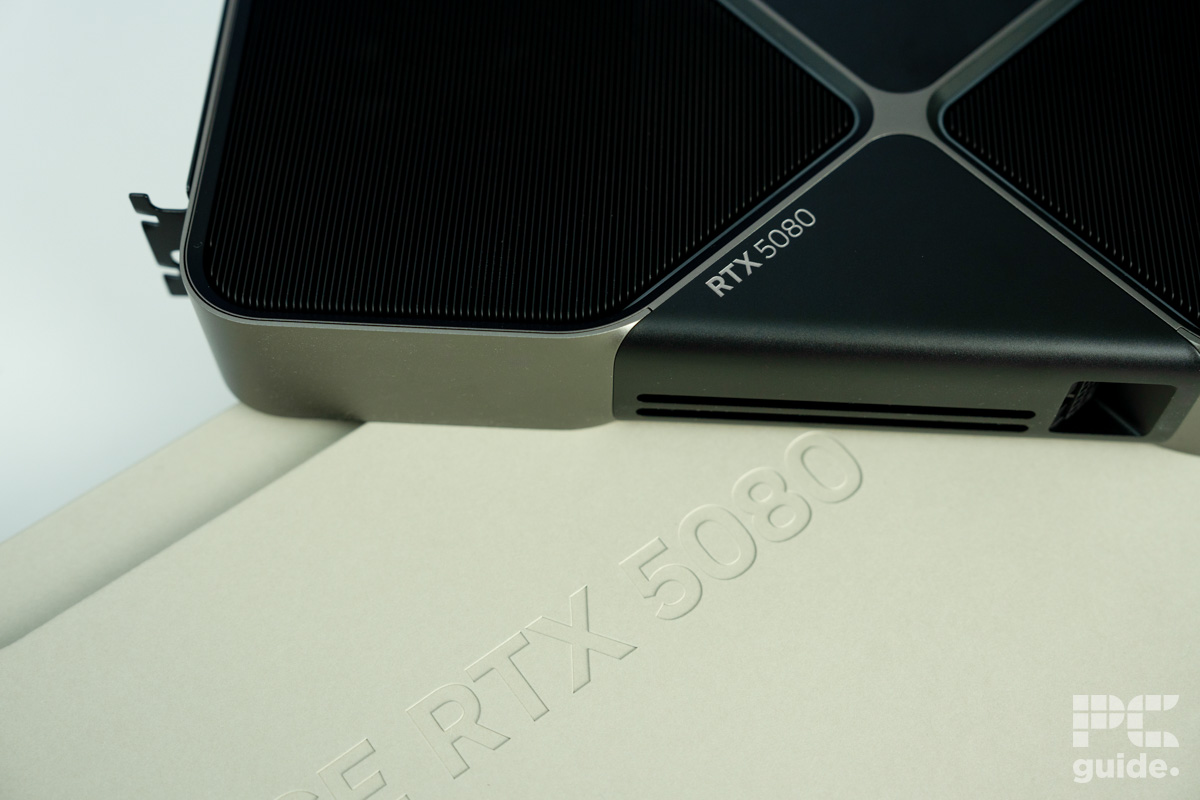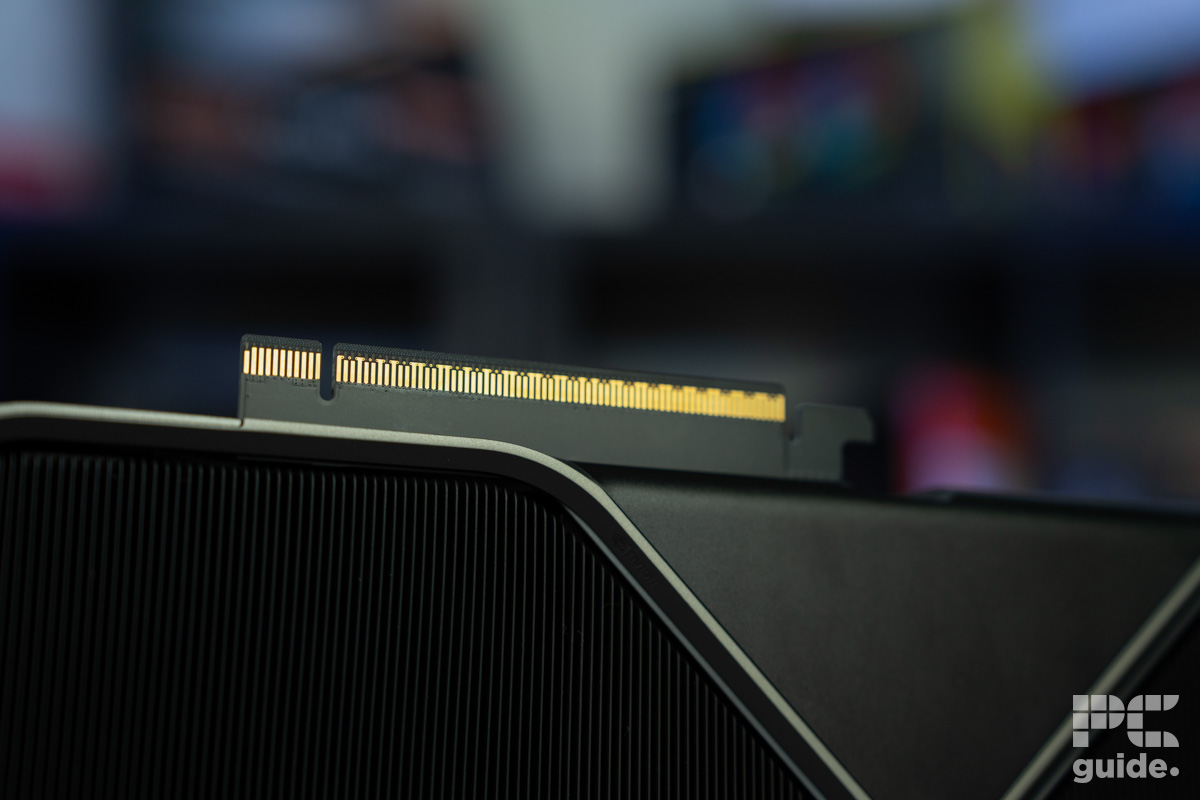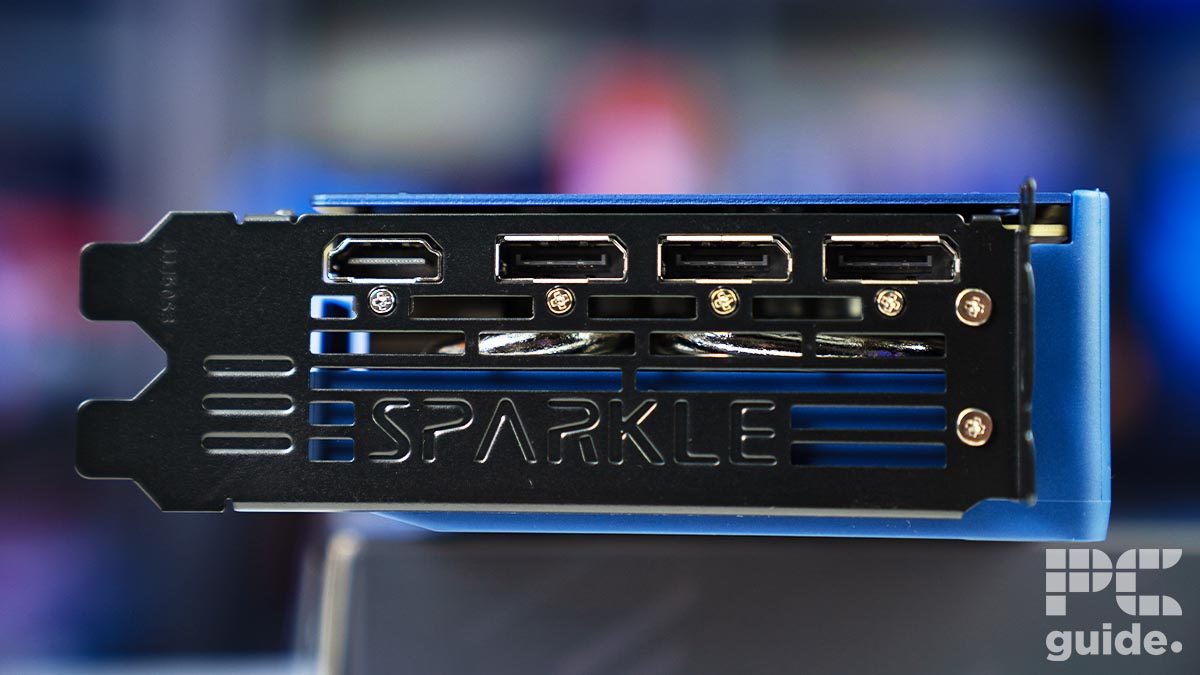Best GPUs for Core i9-12900K in 2025 – our top picks

Table of Contents
The 12th-generation Intel chips are four years old, and many might think that the latest generation of Nvidia and AMD GPUs won't pair well with them. However, these processors still pack a punch even against 14th-Gen options and can handle the power of these next-generation GPUs without causing major bottleneck issues.
On that note, we’ve selected a handful of GPUs based on their price, features, and the performance they showcased during our in-house testing. We test all our CPUs and GPUs in-house to have a better gauge of their real-world performance, which helps us recommend only the best options.
Before making your decision, it’s worth noting that while the 50-series is a perfectly viable option, due to stock issues, it might be difficult to grab hold of it at the time of writing for many people, which is why we’ve focused on more attainable cards for this guide. The RX 9070 XT is also a great option to pair with the CPU, and AMD seems to be working on replenishing the stock soon.
Products at a glance
-
Best GPU for i9-12900K overall
ASUS Prime RX 9070 XT OC
- GPU: Navi 48 XT
- Stream Processors: 4,096
- VRAM: 16GB GDDR6
- Memory Bus Width: 256-bit
- Base/Game/Boost clock speed: 1,660/2,400/2,970 MHz
- TBP: 304W
-
Best runner-up GPU for i9-12900K
Sapphire Radeon RX 7900 XT
- GPU: Navi 31
- Stream Processors: 5,376
- VRAM: 20GB GDDR6
- Memory bus: 320-bit
- Base clock speed: 1,387 MHz
- Game Clock speed: 2.2025 MHz
-
Best Nvidia GPU for i9-12900K
Nvidia GeForce RTX 5080 Founders Edition
- GPU: GB203
- CUDA Cores: 10752
- VRAM: 16GB GDDR7
- Memory Bus width: 256 bit
- Base Clock speed: 2295 MHz
- Boost Clock speed: 2617 MHz
-
Best budget GPU for i9-12900K
SPARKLE Intel Arc B580 TITAN OC
- GPU: BGM-G21
- Shading units: 2,560
- VRAM: 12GB GDDR6
- Memory bus width: 192-bit
- Bandwidth: 456GB/s
- Base/Boost clock speed: 2,670/2,740 MHz
How we picked
We researched the market and found various options from Nvidia and AMD. We filtered those options based on their price, compatibility, performance, and other features, such as DLSS and FSR. On top of that, we also conduct rigorous in-house testing of the cards. This gives us insight into how they'll perform, and we can help you pair them with various CPUs, including an i9-12900K. We're always updating our list with the latest information, so if there are better pairings than these, we'll be sure to update them, so check back with us.
Our top picks

- GPU: Navi 48 XT
- Stream Processors: 4,096
- VRAM: 16GB GDDR6
- Memory Bus Width: 256-bit
- Base/Game/Boost clock speed: 1,660/2,400/2,970 MHz
- TBP: 304W
- Great performance even at 4K and reaching RTX 4080 levels
- Excellent MSRP makes it much more appealing against competition
- Incredible improvements over the previous generation
- Plenty of VRAM for the price
- Still falls behind in ray tracing, AI, and creative workloads
- Spiking and high power draw
- Features not as extensive as Nvidia
If you're looking for the best GPU for the i9-12900K, check out the RX 9070 XT. You might be wondering why we're recommending the latest generation of GPUs to pair with a four-year-old Intel chip. The answer is that despite being an older chipset, it packs enough power to handle the newer GPUs easily.
The RX 9070 XT is a powerful card and if you pair with a CPU that can’t keep up with its performance, it’ll hold it back. That said, this shouldn’t be the case with the 12900K as it is solid processor even today. At lower resolutions, gaming performance is CPU dependent as the CPU has to churn out more instructions because the GPU can quickly process 1080p data. However, at higher resolution such as 4K, the GPU needs more time to process data which gives the CPU time to breathe and hence the gaming performance becomes GPU dependent. So, with this pairing, a CPU or GPU bottleneck shouldn’t occur at high levels but remember no system is 100% bottleneck free.
The reason for selecting this graphics card is that it can compete with high-end GPUs from the competition and its predecessors. To give you an idea, we’ll start with its gaming output. The RX 9070 XT was able to churn out plenty of FPS in the most demanding titles with ease, such as Cyberpunk 2077 and F1 24, and delivered 75 and 61 FPS at 4K natively.
However, you might be targeting the 1440p resolution, and the 12900K should be able to keep up with it easily. In the same titles, we got 131 and 129 FPS; however, what is surprising is that the RTX 5080 managed 136 FPS in F1 24, which is only a performance difference of 3.7%.
Fighting against cards higher up in tiers and so providing an excellent choice even for 4K gaming and with ray tracing capabilities. However, it still loses out in some scenarios, and not everything is up to the same level.
PC Guide
So, regardless of the game or the resolution you’re playing at, both components should complement each other to deliver great results. That being said, gaming isn’t the only thing that you do with a PC, and if you’ve got professional tasks to take care of, this GPU also has excellent synthetic output.
In Geekbench AI, we tested its performance in single-precision, half-precision, and quantized, which gauge a graphics card’s AI output by using 32-bit and 16-bit floating point and 8-bit integers, respectively. In these tests, the RX 9070 XT delivered 35,496, 48,671, and 30,662 points. For comparison, the RTX 5080 FE churned out 36,534 in single-precision, 60,909 in half-precision, and 27,994 in quantized.
So, it can also trade blows with the RTX 5080 in AI workloads and is, overall, an excellent graphics card with great value for money. In addition, it also comes with excellent software improvements, and AMD has also made leaps with its ray tracing technology. If you’re looking to explore more options, we’ve got the best CPUs for the RX 9070 XT covered as well.

- Bandwidth: 800 GB/sec
- TDP: 300 W
- Great performance at 1440p and 4K
- 20 GB of GDDR6 VRAM
- Enhanced performance with FSR3
- Not the best Ray Tracing results
- High average power draw
- GDDR6 is slower than GDDR6X
If you're looking for the best AMD GPU for i9-12900K, consider pairing it with the RX 7900 XT for top-notch in-game performance. In our RX 7900 XT review, we found it performing exceptionally well at 1440p and 4K, and its price makes it better. We ran several titles, but the most notoriously demanding one was Cyberpunk 2077, and this card managed 62 and 119 FPS at native 4K and 1440p, respectively.
This GPU has 5,376 stream processors. This means that it should be more than capable of handling graphical tasks of varying intensities. It also has a game frequency of 2,000 MHz and a boost frequency of 2,400 MHz. So, you can always increase the frequency to squeeze out every bit of performance from this GPU.
The RX 7900 XT is made on the RDNA 3 architecture, which is roughly 20-30% more efficient than RDNA 2, meaning you should get better performance than the previous generation of AMD graphics cards.
It also has 80 MB of AMD Infinity Cache, which stores frequently accessed data. The cache is close to the core, so whenever data is needed, it can be retrieved from the cache instead of requesting the VRAM to fetch it. This reduces access times, which leads to increased performance and efficiency.
The AMD Radeon RX 7900 XT's new price point and powerful performance put it firmly in competition with some of Nvidia's best mid-range GPUs, and its large memory pool ensures it will be futureproofed for many years to come.
PC Guide
This graphics card houses 20 GB of GDDR6 memory with a 320-bit memory interface. This means that there should be more than enough VRAM to turn up the in-game settings without overloading the memory. In addition, the 320-bit interface should ensure smooth data transfer to and from the GPU.
The RX 7900 XT also packs many performance-enhancing features, such as AMD FidelityFX Super Resolution or FSR. According to AMD, you should see a performance boost from 87 FPS to 135 FPS in titles like Immortals of Aveum at 4K with FSR3 NativeAA mode and Frame Generation enabled by turning on FSR. So, even if a title is giving this GPU some trouble, which is unlikely, you always have software options to give it a boost.
Regarding connectivity options, it has two 2.1 Display ports, one 2.1 HDMI port, and one USB Type-C. This should be more than enough to cater to a multi-monitor setup or handle the high refresh rate output of your monitor. Furthermore, it has a maximum supported resolution of 3840×2160. So, if you have a 4K monitor, you should be able to experience the full capabilities of this GPU.
So, if you lean more toward Team Red and their GPUs, the RX 7900 XT is the best GPU for Intel Core i9-12900K.
What users say
According to Amazon reviews, this graphics card has great build quality, good software, and excellent performance. One reviewer had this to say: “The GPU can run anything at 1440p and even 4k at ease. Very fast. I had some issues figuring out AMD drivers and its software, but after learning, it is 10x better than nvidia's GeForce experience.”

- GPU: GB203
- CUDA Cores: 10752
- VRAM: 16GB GDDR7
- Memory Bus width: 256 bit
- Base Clock speed: 2295 MHz
- Boost Clock speed: 2617 MHz
- Small and clean design with no compromise
- Upgraded GDDR7 fast memory
- Offers fast connectivity with HDMI 2.1, DP 2.1, and PCIe Gen 5
- DLSS 4 Frame Gen and Transformer upscaling
- Still highly priced due to current state of GPU market
- Increased power requirement
- Availability already a worry
For those who want the best gaming performance with the 12900K without the risk of a bottleneck, we recommend you check out the RTX 5080. This is the second most powerful GPU in the RTX 50-series lineup, and during our RTX 5080 review, it delivered excellent gaming and synthetic performance.
What makes it even better is the inclusion of DLSS 4 and Multi-Frame Generation. While many aren’t happy with the dependency on AI upscaling, in tough scenarios such as when path tracing at 4K is turned on, these technologies can work well to overcome the difference.
An example of this is at 4K, Cyberpunk 2077 ran with 72 frames per second. However, by turning on RT overdrive, the FPS dropped to 19, which is unplayable. So, with DLSS 4 turned to performance mode and MFG set to 4X, which is its highest setting, the FPS increased to 183, which is simply amazing.
The Nvidia RTX 5080 FE is an impressive graphics card from the get-go. Its eco-friendly packaging and minimal size are surprising factors in unboxing, but the performance doesn't falter with that design. Instead, it quickly pushes 4K framerates at the highest settings and improves on the previous generation without breaking a sweat.
PC Guide
That being said, even in native settings, the 5080 delivered good performance, as we got 126 FPS in Indiana Jones and The Great Circle and 84 FPS in F1 24. This is all due to the hardware it has under the hood. It features 10,752 CUDA cores based on the Blackwell architecture and 16GB of GDDR7 VRAM, which is more powerful and efficient than previous iterations.
While the memory interface width didn’t receive an upgrade and is still limited to 256-bit, it has a pretty high memory bandwidth of 960 GB/s. This means that it can handle and process more data easily, which gives it superior performance compared to its predecessors.
The design and cooling of the Founder’s Edition variant were also notch as the decision to reduce the PCB side to promote better cooling really showed when we stress-tested the GPU. After running Furmark 2 for over half an hour, the maximum temperature was 68°C, and the memory junction reached a peak of 74°C. These numbers are very normal for a GPU, and it shows that the improved vapor chamber, liquid metal interface, and plenty of heat pipes did their job perfectly.
Overall, the RTX 5080 is a great GPU to pair with the Intel Core i9-12900K for gaming and other workflows. However, if you want to take a look at what other processors you can use with this GPU, we’ve got you covered with the best CPUs for the 5080 as well. That being said, the only issue with this GPU is that it is currently out of stock and there seems to be no official date for when it’ll be available again.

- GPU: BGM-G21
- Shading units: 2,560
- VRAM: 12GB GDDR6
- Memory bus width: 192-bit
- Bandwidth: 456GB/s
- Base/Boost clock speed: 2,670/2,740 MHz
- Plenty of VRAM in comparison to the competition
- Great price to performance
- Well-built and slim design
- Only Gen 4 x8 PCIe – may be an issue for older motherboards
- Slightly more expensive than reference card
- Still occasional troubles in older games specifically
The 12900K is the flagship processor of Intel’s 12th generation, meaning it can be paired with high-end, mid-range, and budget CPUs. However, if you’re short on finances and want a graphics card that can deliver good performance at 1080p and 1440p, we recommend pairing this CPU with the Intel Arc B580.
For some, an Intel GPU might be an oddball, but it seems like Team Blue has made good moves in the GPU department. In our Sparkle Intel Arc B580 Titan OC review, we took it through its paces, and it performed exceptionally well. So, there shouldn’t be a CPU bottleneck with the 12900K, as it has enough speed and power to keep up with the B580 at lower resolutions.
That being said, this GPU is a bit different than what we’re used to, seeing as it is powered by 20 Xe cores based on the Xe 2 architecture. This number is small compared to Nvidia and AMD GPUs, which have thousands of CUDA cores and Stream Processors. However, these 20 cores pack a massive punch, as this graphics card was able to outperform the RX 7600 XT and RTX 4060 and even went toe-to-toe with the RTX 4060 Ti and took home some victories.
Coming in with a decent amount of VRAM for the ever-growing graphics requirements at a lower price, it even offers 1440p performance at times in a tier where the competition was a bit stale. It's certainly a great alternative to an entry-level gaming card.
PC Guide
The RTX 4060 only had better performance in Blender, but the B580 had significantly better output in 3DMark and Handbrake tests. So, coupled with the 12900K, it should deliver good performance for professional workloads like editing, Photoshop, and more.
On the other hand, its gaming output was much better. We paired it with the Ryzen 7 7800X3D and ran a handful of games at 1080p and 1440p, primarily, but some of them even ran at 4K, which was surprising but not unwelcome. In Shadow of the Tomb Raider, the B480 delivered 135, 96, and 54 FPS at 1080p, 1440p, and 4K, respectively, and with Ray Tracing enabled, we got 87, 63, and 35 FPS in the same three resolutions.
For comparison, the RTX 4060 managed 136, 87, and 39 FPS at 1080p, 1440p, and 4K. So, while the performance was the same at 1080p, the 4060 started to struggle at higher resolutions. With Ray Tracing turned on, it kept up with the B580 at 1080p with 87 FPS but dropped to 56 and 26 FPS at 2K and 4K, respectively.
So, not only does the B580 have better performance, but it also costs less, giving it much better value. If you’ve got a 1080p or 1440p monitor, you should experience smooth gaming performance with this graphics card paired with the i9-12900K.
How to pick the best GPU for i9-12900K
Before investing in any GPU, there are a handful of factors that you need to keep in mind. These factors should help you avoid needless upgrades and filter your options until you have the best balance between performance and value. We've listed some of these factors below to help you make an informed decision.
Price
The first thing you need to consider is the price point at which different GPUs are coming. For example, a GPU costing over $1,000 could cost more than your entire build. That said, you could get it for “future-proofing” your setup, but with the Intel i9-12900K, the upgrade options end after the 14th generation, as the next generation will have a different socket.
So, it’s better to look for a GPU that complements the computational prowess of the Intel Core i9-12900K while keeping the cost under control and not going for an overkill option. This will also help save money that you can use to upgrade other components such as the RAM, SSD, or even your CPU to a more powerful chip like the Intel Core i9-13900K, which we also have a hands-on review of.
GPU size
An important aspect to consider is the GPU size and your casing. If your casing doesn't have adequate space to house the card properly, you will have to spend extra money upgrading your case. On the other hand, if you do manage to fit it inside the casing, the airflow might not be great due to everything being cramped up. This will most likely lead to overheating, and you'll need to invest in bigger and more powerful fans to keep things cool.
So, visit the manufacturer’s or third-party distributor’s website, look at the dimensions, and measure the space inside your casing. If it's enough, go forward with the purchase.
Compatibility
GPUs and CPUs don't have many compatibility issues, and even older-generation motherboards can support the latest-generation GPUs because the PCIe is backward compatible. The latest Nvidia 4000 and AMD 7000 GPU series all support PCI 4.0. However, if you have the newer PCI 5.0 motherboard, you should be able to connect your GPU without compatibility issues. However, the performance might be a bit compromised due to the limitation of PCIe 4.0.
Brand
There are various brands that offer different styles of the same GPU. Some examples include ASUS, Gigabyte, PNY, and more. Each brand has its own price for the same GPU, which increases depending on how many bells and whistles they include, such as RGB lighting and fancy backplates. However, that’s not all – they also manufacture overclocked versions, which come at an even higher price.
So, depending on your budget, you could get the same GPU at varying prices depending on the brand. Generally, ASUS ROG Strix GPUs fetch high prices, while other brands like PNY are relatively cheaper.





































